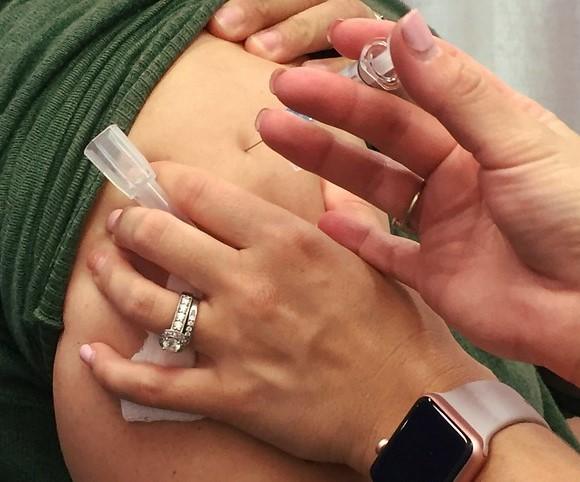The flu vaccine offered no protection against the H3N2 strain that dominated at the end of the 2018-19 US flu season, federal officials said last week, leaving overall protection from the disease at only 29%.
The numbers do not reflect final end-of-season data that will be made public in the coming weeks, but they result from Centers for Disease Control and Prevention (CDC) analysis through May, according to data presented Jun 27 to the CDC's Advisory Committee on Immunization Practices (ACIP).
And, despite lower-than-normal effectiveness, the flu vaccine still prevented up to 90,000 hospitalizations.
Higher protection against H1N1
The data were presented by Brendan Flannery, PhD, MPH, the lead CDC investigator for the US Flu Vaccine Effectiveness Network, and his colleagues. According to CDC information obtained by CIDRAP News, they are based on isolates from 4,128 people who tested positive for influenza—1,333 of whom had been vaccinated—and 11,305 who tested negative, including 4,059 who had received the vaccine.
CDC scientists compare the differences in the incidence of flu between vaccinated and unvaccinated people to estimate flu vaccine effectiveness (VE) overall, against each flu strain, and among various groups.
VE against the H1N1 strain, which predominated the earlier half of the flu season, was 44% against flu illness and 48% to 60% against hospitalization for flu. When combined with a not-statistically significant 9% protection against H3N2, however, overall VE was 29%.
The vaccine likely prevented about 40,000 to 90,000 hospitalizations, Flannery noted.
Overall VE was highest in children 6 months to 8 years old, at 49%, followed by adults 18 to 49 years old, at 25%. For the other three age-groups—9 to 17 years, 50 to 64, and 65 and older—VE was 6%, 12%, and 12%, respectively, and not statistically significant, meaning no evidence of protection.
Flannery attributed the lack of vaccine protection against the H3N2 strain to a mismatch between the vaccine strain and H3N2 viruses circulating and causing illness. He pointed out that the strain has been updated for next year's Northern Hemisphere's flu vaccine, with the aim of a higher VE for 2019-20.
Low to moderate VE in recent years
For 2017-18, when the CDC said the vaccine strains matched well with circulating strains but the H3N2 strain predominated, overall flu VE was 38%. That compares with a VE of 49%, 52%, 6%, 48%, and 40% for the 2012-13 through 2016-17 seasons, according to CDC data.
Kristen Nordlund, with CDC Public Affairs, said "Last season, flu disease was caused by H1N1 and H3N2 viruses in roughly equal proportion." The H3N2 strain is typically associated with more severe disease.
See also:
Jun 26-27 ACIP meeting agenda
CDC seasonal flu VE data for recent seasons




















